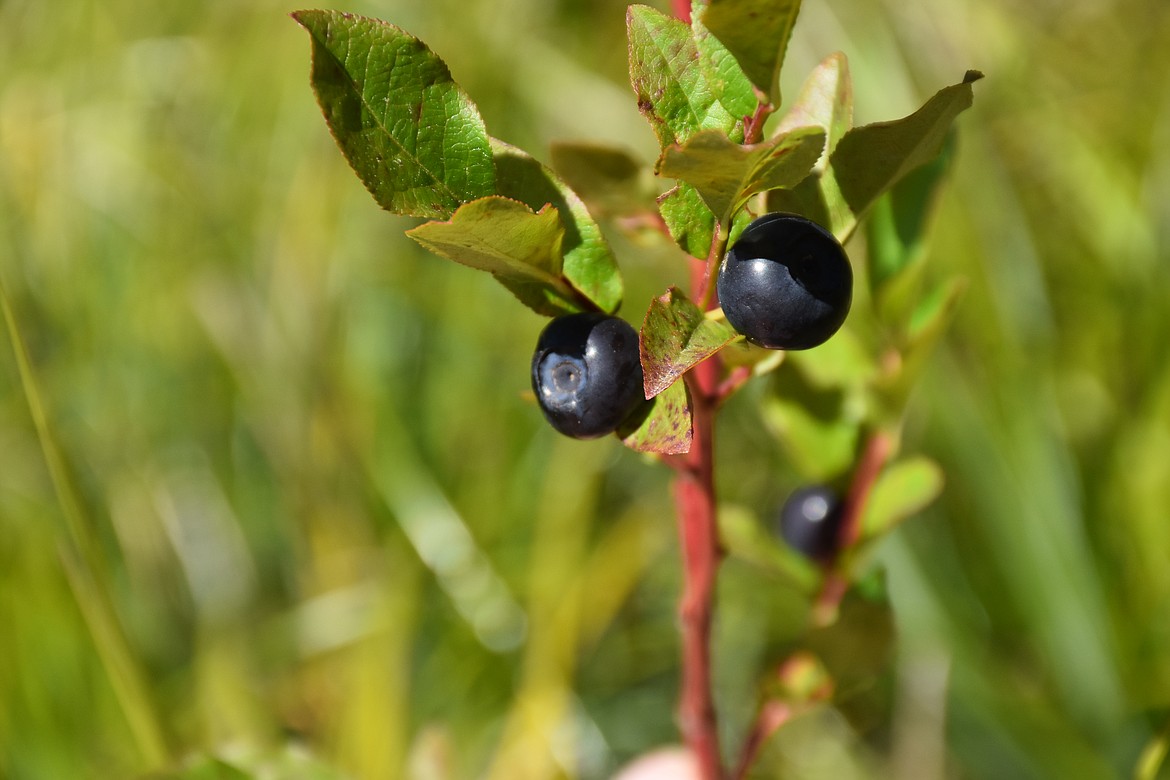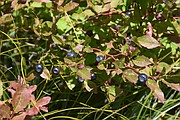Huckleberry picking is underway!
Don Bartling Contributing Writer | Hagadone News Network | UPDATED 6 years, 4 months AGO
As summer days become hotter and drier in Boundary County a special treat is brewing in our surrounding forests. Huckleberries! These sweet, finger-staining treats are right under your nose on most hikes in August.
The huckleberry (Vaccinium Membranaceum) — other common names are Big Whortleberry, Black Huckleberry and Bilberry — was adopted as Idaho’s state fruit on Feb. 14, 2000.
Two weekends ago when I was exploring in the mountains of Boundary County I found many ripe huckleberries and many more that were not yet ripe. Most plants were very heavy with berries, so it could be a banner season for picking. Many of the berries, I thought, that were not ripe appeared to be starting to turn color and will be ready soon.
However, last weekend met me with surprise, even though I have lived in Boundary County about two decades, that time has taught me by late July and early August Boundary County mountain ranges will be crawling with treasure hunters searching for purple gold. I was on my favorite huckleberry picking southern exposed ridge where I can see as far as Perkins Lake to the east and Dawson Lake to the south just snacking on some purple gems when some huckleberry prospectors arrived. They were armed with plastic ice cream buckets, grocery store sacks, coffee cans, or other containers, the prospectors were intent on combing hillsides from dawn to dusk. And I knew it was just a matter of time when in coffee shops and cafes, they would be speaking in hushed tones of finding “gold mines,” “mother lodes,” “bonanzas” or “purple gold”!
All this activity can mean only one thing: Boundary County’s prized wild fruit, the huckleberry, is plentiful and ready to pick.
At this time of year, it is not too surprising that the huckleberry is the state fruit. Just about everybody in North Idaho looks forward to huckleberry picking. Huckleberries freeze well and can provide a very healthy addition to your table or to your breakfast smoothie all year long.
Huckleberries grow in moist, cool forested environments at mid to upper elevations. Berries are purple to purplish red and are a quarter to half inch broad depending upon the year and the area. The plants grow up to three feet tall and take up to 15 years to reach full maturity. The single, dark purple berries grow on the shoots the plant produced that year.
As most people in North Idaho know, huckleberries are delicious favorites of both people and bears. Bears in north Idaho eat not on the berries, but in the spring they also utilize the flowers, leaves and stems. Black bears have what are called Oprehensile lips. They can use these well-coordinated and flexible lips to pick individual huckleberries faster than any person can pick with their hands.
Many factors such as elevations, ripening seasons and climate contribute to a good berry site. The best berry picking is usually found along abandoned logging roads, and in old burns. The berry bushes found in these areas have a lot of sunlight and little competition for nutrients.
Early in the season, by mid-July, the berries on sunny southern facing slopes and lower elevations are first to ripen. They are most succulent in mid to late summer. However, good picking can generally be found as late as October on north-facing slopes.
Another thing to remember is that people aren’t the only creatures working huckleberry patches. Black bears and grizzlies eat them too, so whenever you’re picking in bear country be “berry aware” of the bears, stay alert and make plenty of noise to reduce the chances of surprising a bear. The berries are very high in carbohydrates, and an abundant crop assures the bear’s survival through the winter months when they are hibernating.
Enjoy the beauty of Boundary County and get your tongue purple on some delicious wild huckleberries!
ARTICLES BY DON BARTLING CONTRIBUTING WRITER

About the Douglas fir
“The big tree is nature’s forest masterpiece, and so far as I know, the greatest of living things.” — John Muir 1838-1914 “Father of the National Parks” and author.

Winter on the hoof: How deer, elk and moose cope with the snow!
“When snow falls, nature listens.”




